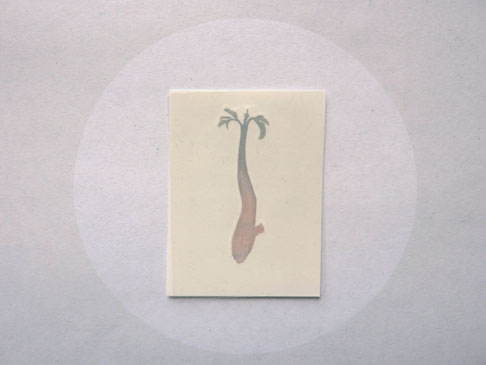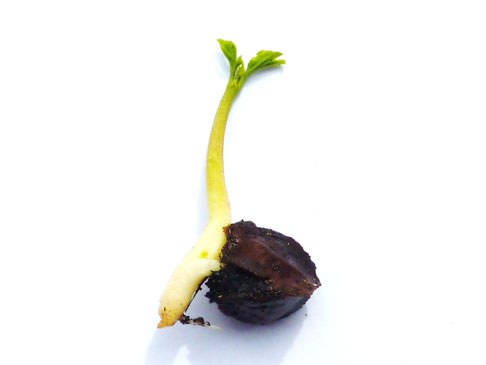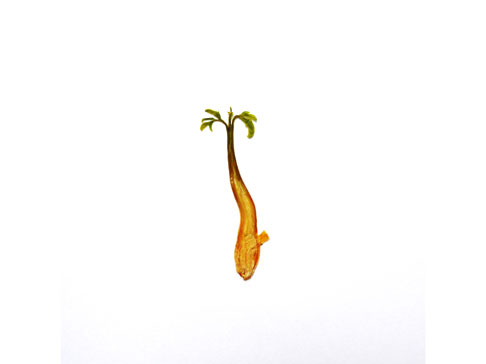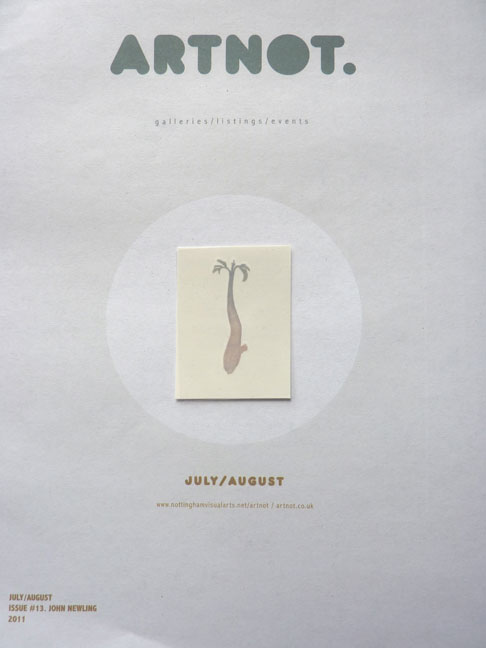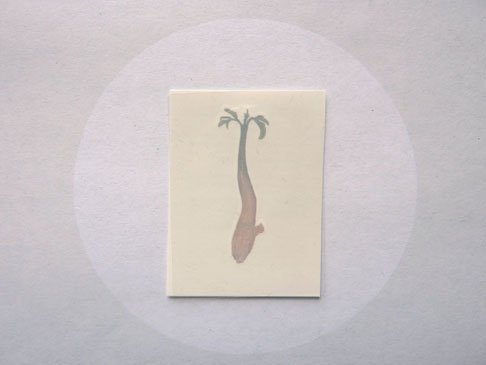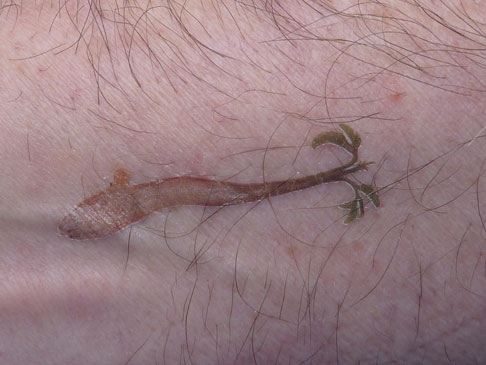Commissioned by ARTNOT Transfer: The relic of a Miracle
On Wednesday the 9th of March I planted some 18 Moringa Oleifera ‘Miracle Tree’ seeds in small pots and placed them behind the curtain in the study room at Nottingham Contemporary. On Friday 18th of March the first shoots of the germinated trees were seen. Of the 18 seeds planted 14 germinated. It was from one of the 4 failed seeds that the ‘miracle tree’ tattoo emerged.
On Monday 28th of March I bought the plants back to my studio. I checked the soil of the seeds that had not germinated. To my surprise I found one seed that seemed to be growing upside down in the soil. I carefully removed the seed and re-planted it. Whilst the tree did grow it stopped growing after a few days. I rechecked the seed and found that it had no root production. Despite the seed clearly being damaged it was amazing to think that it still managed some growth and leaf production. The power of the evolutionary imperative to grow is staggering.
The shape, provenance and ontology of this tiny tree seemed to lend itself to possible material transformation. I decided to preserve the small tree. Some five weeks later the tree was pressed. It measured 4 cm in height by 1.5 cm in width.
It is the closeness of the relationship between the miracle trees and me that has stayed with me and continues to engage my thoughts. The work, like many of my projects, seeks to privilege an intimacy of knowledge gained through observation and experience. Such closeness tried to overcome the material, social and ethical distance that can occur in works that attempt to comment on situations or conditions that are evident but not experienced.
The tiny tree reminded me of the kind of Desert Island that is beloved by animators. It did seem to echo the occasional sense I get of being isolated on an island of conceptual and material localism within the relationship. That said, this isolation, even loneliness, tends to be short lived as the experiences and subsequent knowledge of the relationship makes connections in and through the complexity of other things.
It was with the combination of the ‘island’ metaphor and the notion of ‘closeness’ that the idea of a transfer tattoo emerged. Close here becomes skin with an image lying between our corporeal and experiential senses; a place where art often hides out. Transferring is a common concept in the practice of art. Whether it is the complex exchange of meanings constructed through moving something from one place to another or, equally complex, the transference of material and symbolic meanings within the work, art restlessly transfers our material and psychological selves.
The work is the transference of the Moringa Oleifera tree from its organic form, to a reproducible material of adornment. The tattoo transfer becomes an expression of this transference; an image guised as a desert island but, behind the guise, a relic of a miracle. To wear it is to briefly acknowledge the nurture that is Nature from an island that is a miracle tree.
Note: Often referred to as the Miracle Tree, the Moringa Oleifera is native to the southern foothills of the Himalayas in northwestern India. Gram for gram, Moringa leaves contain: seven times the vitamin C in oranges, four times the calcium in milk, four times the vitamin A in carrots, two times the protein in milk and three times the potassium in bananas. It is for this and other extraordinary properties of this tree that it has been referred to as the world’s most generous tree.
